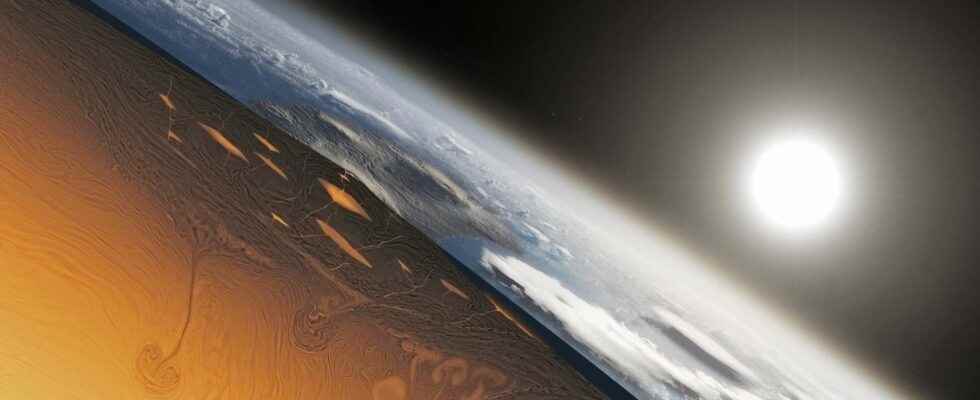You will also be interested
[EN VIDÉO] A billion years summarized in 40 seconds: plate tectonics Researchers have modeled the movements of tectonic plates over the past billion years.
The Earth consists of several layers or envelopes like an onion. Earth’s rigid outer shell is the lithosphere which is made up of a crust (continental or oceanic) on the surface and part of the coat superior in depth, and is subdivided into tectonic plates.
Although they appear immobile to us, these plates move because the lithosphere, rigid, rests on the asthenosphere which is a part ductile of the upper mantle. This provision will create a treadmill movement where the coat will push the oceanic crusts under the continents, at the plate boundaries.
This process is called the subduction and it is at these boundaries that many of the geological events that we see on the surface of the Earth occur, such as earthquakes, volcanoesmountains and ocean trenches.
Observe the process of subduction
When oceanic crust plunges beneath the continent for a subduction (the slab), the best way to follow the future of this recycled crust is by reading the seismic waves that are directly generated by earthquakes. They will travel through the interior of the earth and cross different materials at gears different.
Their propagation speed depends on the material crossed and moreover shows a strange behavior at the border between the mantle and the earth core, known as the large low shear rate provinces, one under the Pacific Ocean and one under Africa. Both of these structures are colossal, they can span thousands of kilometers and up to 1,000 km in height, and are not yet well understood in the scientific community.
These titanic structures intrigue and one wonders what type of rock it is and how it accumulates there. To answer this question, a research team including scientists from Germany, Utah, California and the United Kingdom, published a study in Nature which aims to understand the mechanical properties of these rocks and minerals.
The most abundant mineral in the Earth’s mantle
For this they worked on perovskite which is a group of major minerals in the subducted crust. They form at a depth of about 550 km from garnet and can represent up to 25% of the volume of subducted crust and up to 10% of the volume of a mantle.
This group of minerals is difficult to study, but after successfully analyzing its structure, the researchers modeled its resistance and its behavior under different stresses. They realized that resistance and viscosity of the perovskite are significantly lower than the rest of the mantle. With these new data, the research team assumes that these differences may affect a subducting crust.
When the subducted crust reaches a depth of about 550 km, the temperature and pressure form perovskite in much of the slab. This formation will make it partly weak and viscous, leading it to delaminate or detach from the rest of the slab, then to fall into the mantle. Eventually, due to the accumulation of this material, it could form over long periods of stacking a large province at low shear rates.
Interested in what you just read?
